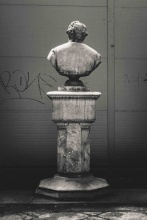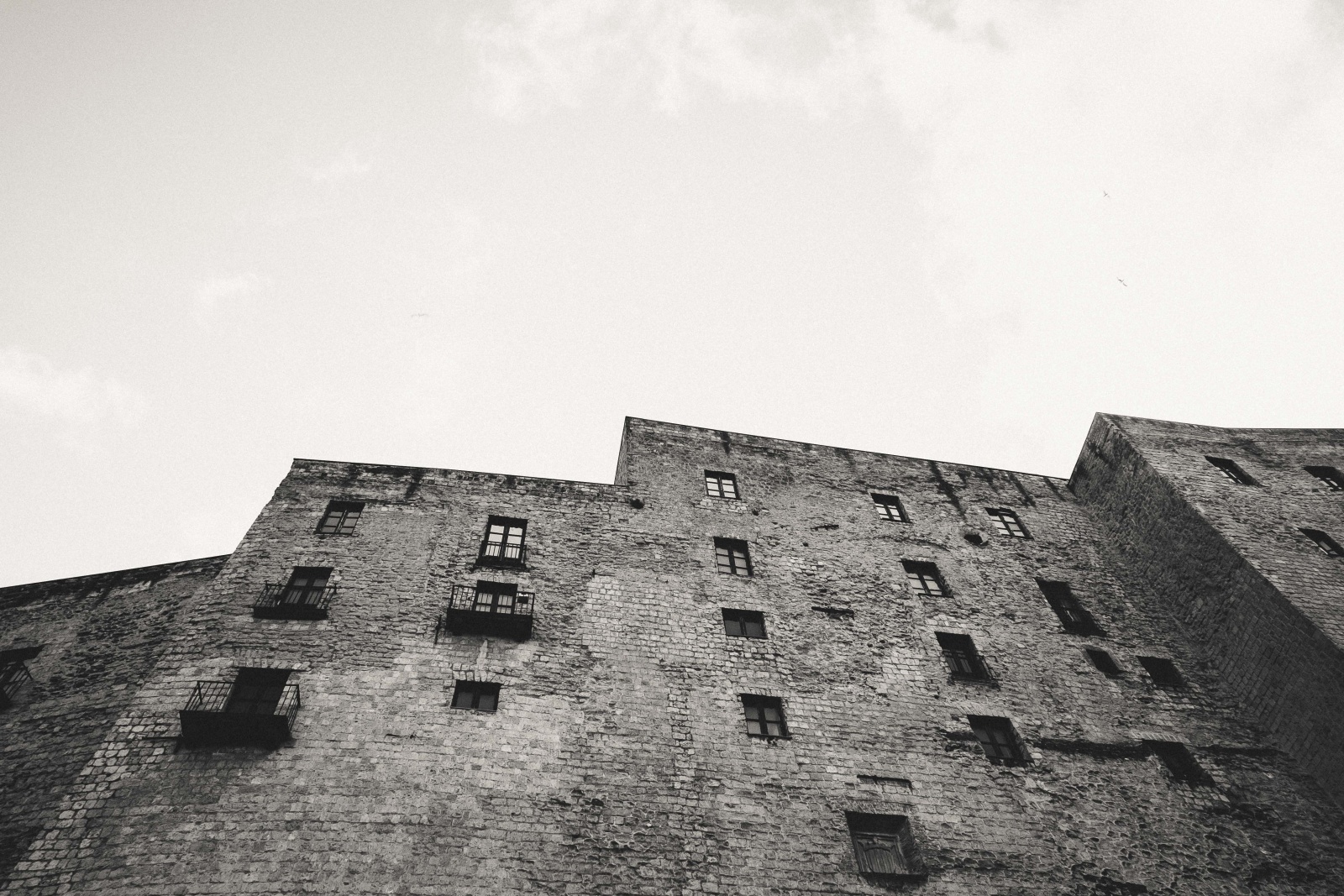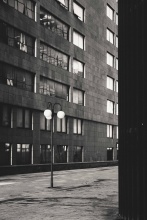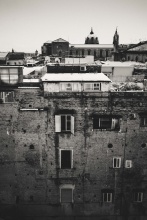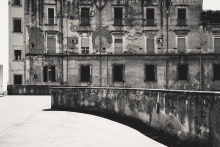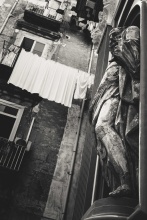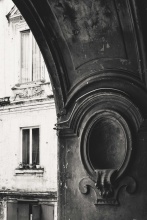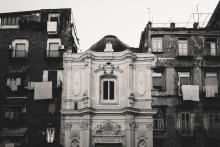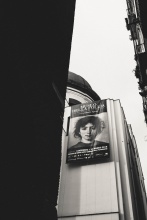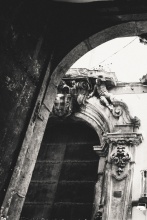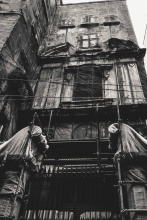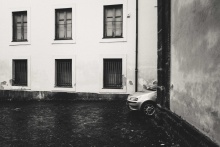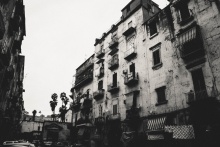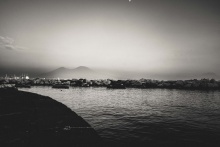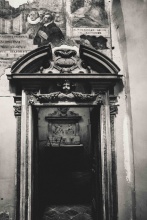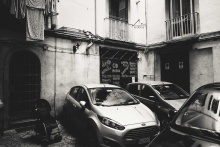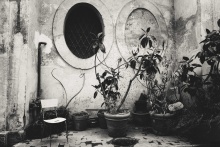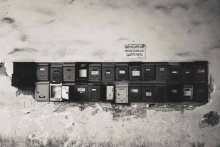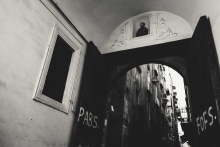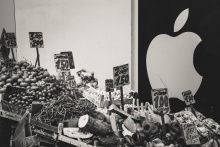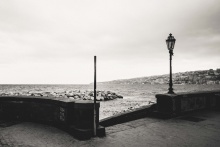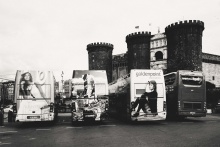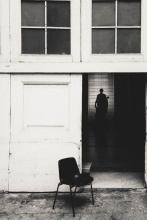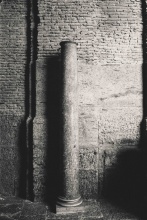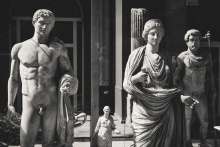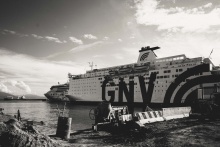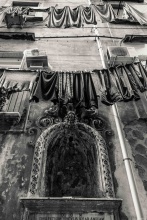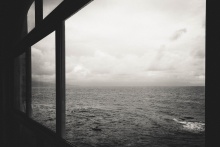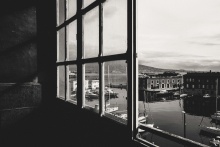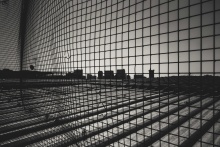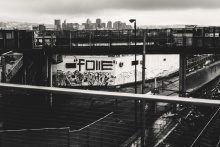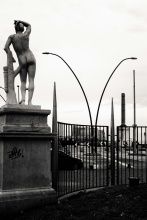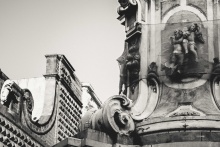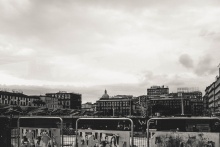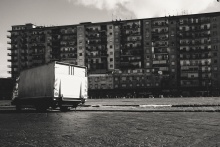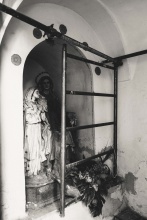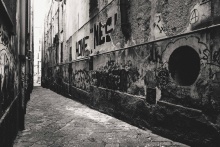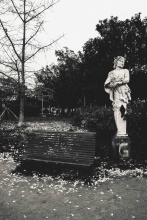








































scenari di napoli
Ita
"Scenari di Napoli” esplora la complessità e l'anima di una città intrisa di storia e vitalità. Questa raccolta di immagini conduce il pubblico in un viaggio visivo che spazia dalla maestosità delle antiche civiltà immortalate nelle statue e nei mosaici alle prospettive urbane contemporanee, cariche di un silenzio eloquente. Le strade di Napoli si rivelano non solo come luoghi fisici, ma come palcoscenici di una drammatica simbiosi tra passato e presente. Attraverso l'occhio sensibile dell'autore, la città si trasforma in una tela di assenza e silenzio, dove la realtà tangibile si fonde con la visione interiore dell'artista. Le vedute urbane diventano testimonianze di un'atmosfera unica, in cui ogni vicolo racconta storie secolari.La serie si estende al mare oltre l'ambito urbano, immergendosi nelle trasfigurazioni poetiche del paesaggio naturale che circonda Napoli. intrisi di struggente malinconia, diventano specchi di emozioni profonde e di una connessione viscerale con la terra e il mare che abbracciano la città.Lo stile metafisico sottolinea la dimensione surreale e simbolica della realtà napoletana.
"Scenari di Napoli" non è solo una serie di fotografie; è un viaggio emozionale che invita a contemplare la città attraverso gli occhi dell'autore. Un'ode visiva alla complessità di Napoli, tra antichità e modernità, dove il bianco e nero non è solo una scelta estetica, ma un linguaggio che svela le molteplici sfaccettature di una delle città più affascinanti del Mediterraneo.
Eng
"Scenarios of Naples" explores the complexity and soul of a city steeped in history and vitality. This collection of images takes the public on a visual journey that ranges from the majesty of ancient civilizations immortalized in statues and mosaics to contemporary urban perspectives, full of an eloquent silence. The streets of Naples reveal themselves not only as physical places, but as stages of a dramatic symbiosis between past and present. Through the sensitive eye of the author, the city is transformed into a canvas of absence and silence , where tangible reality merges with the artist's inner vision.The urban views become evidence of a unique atmosphere, in which every alley tells centuries-old stories.The series extends to the sea beyond the urban sphere, immersing itself in the poetic transfigurations of the natural landscape that surrounds Naples. imbued with poignant melancholy, they become mirrors of deep emotions and a visceral connection with the land and sea that embrace the city.The metaphysical style underlines the surreal and symbolic dimension of Neapolitan reality.
"Scenarios of Naples" is not just a series of photographs; it is an emotional journey that invites you to contemplate the city through the author's eyes. A visual ode to the complexity of Naples, between antiquity and modernity, where black and white is not just an aesthetic choice, but a language that reveals the many facets of one of the most fascinating cities in the Mediterranean.
"Scenari di Napoli” esplora la complessità e l'anima di una città intrisa di storia e vitalità. Questa raccolta di immagini conduce il pubblico in un viaggio visivo che spazia dalla maestosità delle antiche civiltà immortalate nelle statue e nei mosaici alle prospettive urbane contemporanee, cariche di un silenzio eloquente. Le strade di Napoli si rivelano non solo come luoghi fisici, ma come palcoscenici di una drammatica simbiosi tra passato e presente. Attraverso l'occhio sensibile dell'autore, la città si trasforma in una tela di assenza e silenzio, dove la realtà tangibile si fonde con la visione interiore dell'artista. Le vedute urbane diventano testimonianze di un'atmosfera unica, in cui ogni vicolo racconta storie secolari.La serie si estende al mare oltre l'ambito urbano, immergendosi nelle trasfigurazioni poetiche del paesaggio naturale che circonda Napoli. intrisi di struggente malinconia, diventano specchi di emozioni profonde e di una connessione viscerale con la terra e il mare che abbracciano la città.Lo stile metafisico sottolinea la dimensione surreale e simbolica della realtà napoletana.
"Scenari di Napoli" non è solo una serie di fotografie; è un viaggio emozionale che invita a contemplare la città attraverso gli occhi dell'autore. Un'ode visiva alla complessità di Napoli, tra antichità e modernità, dove il bianco e nero non è solo una scelta estetica, ma un linguaggio che svela le molteplici sfaccettature di una delle città più affascinanti del Mediterraneo.
Eng
"Scenarios of Naples" explores the complexity and soul of a city steeped in history and vitality. This collection of images takes the public on a visual journey that ranges from the majesty of ancient civilizations immortalized in statues and mosaics to contemporary urban perspectives, full of an eloquent silence. The streets of Naples reveal themselves not only as physical places, but as stages of a dramatic symbiosis between past and present. Through the sensitive eye of the author, the city is transformed into a canvas of absence and silence , where tangible reality merges with the artist's inner vision.The urban views become evidence of a unique atmosphere, in which every alley tells centuries-old stories.The series extends to the sea beyond the urban sphere, immersing itself in the poetic transfigurations of the natural landscape that surrounds Naples. imbued with poignant melancholy, they become mirrors of deep emotions and a visceral connection with the land and sea that embrace the city.The metaphysical style underlines the surreal and symbolic dimension of Neapolitan reality.
"Scenarios of Naples" is not just a series of photographs; it is an emotional journey that invites you to contemplate the city through the author's eyes. A visual ode to the complexity of Naples, between antiquity and modernity, where black and white is not just an aesthetic choice, but a language that reveals the many facets of one of the most fascinating cities in the Mediterranean.
ITA - Informativa sui cookies • Questo sito internet utilizza la tecnologia dei cookies. Cliccando su 'Personalizza/Customize' accedi alla personalizzazione e alla informativa completa sul nostro utilizzo dei cookies. Cliccando su 'Rifiuta/Reject' acconsenti al solo utilizzo dei cookies tecnici. Cliccando su 'Accetta/Accept' acconsenti all'utilizzo dei cookies sia tecnici che di profilazione (se presenti).
ENG - Cookies policy • This website uses cookies technology. By clicking on 'Personalizza/Customize' you access the personalization and complete information on our use of cookies. By clicking on 'Rifiuta/Reject' you only consent to the use of technical cookies. By clicking on 'Accetta/Accept' you consent to the use of both technical cookies and profiling (if any).
Accetta
Accept Rifiuta
Reject Personalizza
Customize
ENG - Cookies policy • This website uses cookies technology. By clicking on 'Personalizza/Customize' you access the personalization and complete information on our use of cookies. By clicking on 'Rifiuta/Reject' you only consent to the use of technical cookies. By clicking on 'Accetta/Accept' you consent to the use of both technical cookies and profiling (if any).
Accetta
Accept Rifiuta
Reject Personalizza
Customize
Link
https://www.filippocristallo.com/scenari_di_napoli-p27836
Share on
facebook / twitter
Chiudi
Close
https://www.filippocristallo.com/scenari_di_napoli-p27836
Share on
facebook / twitter
Chiudi
Close


